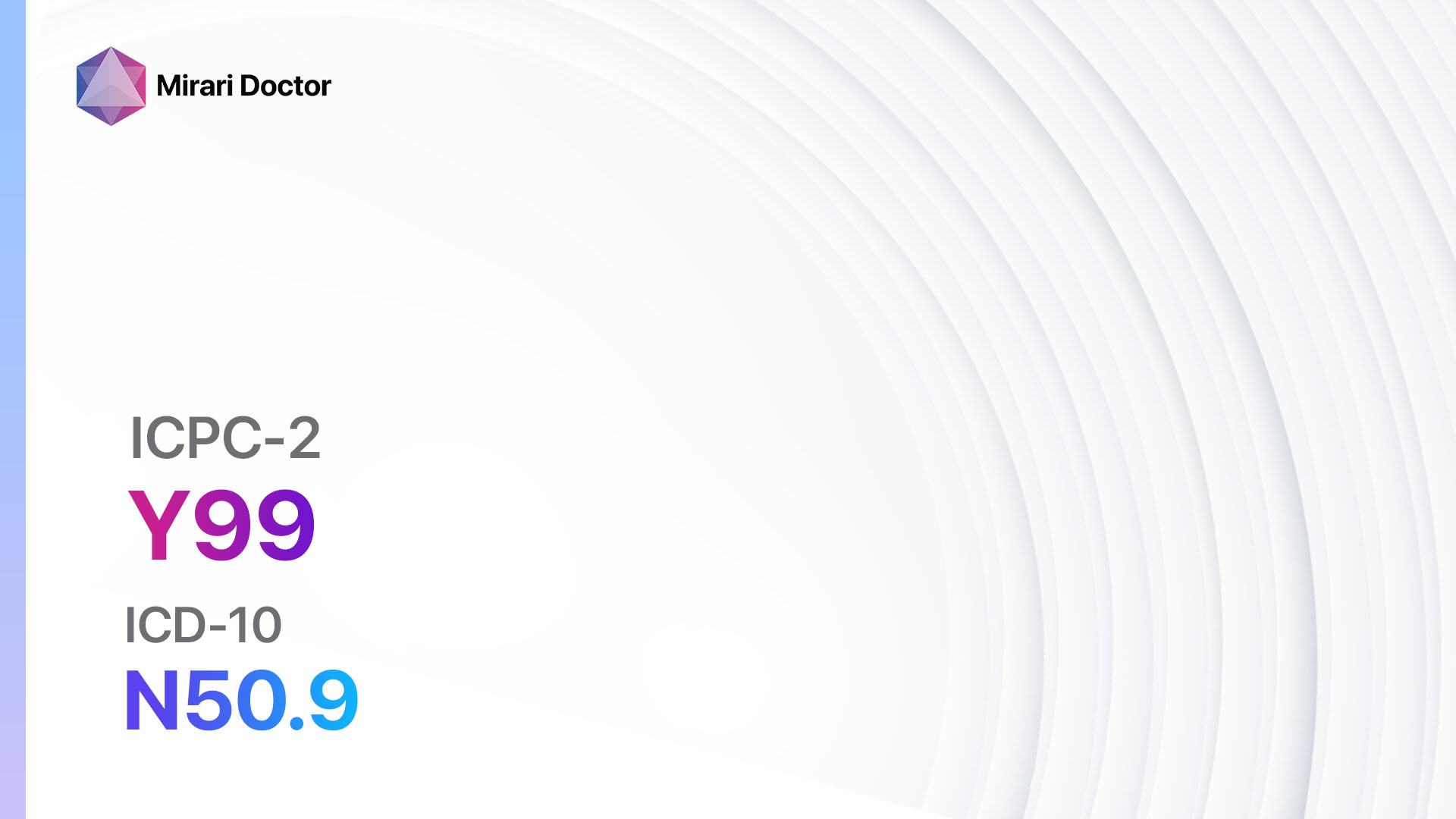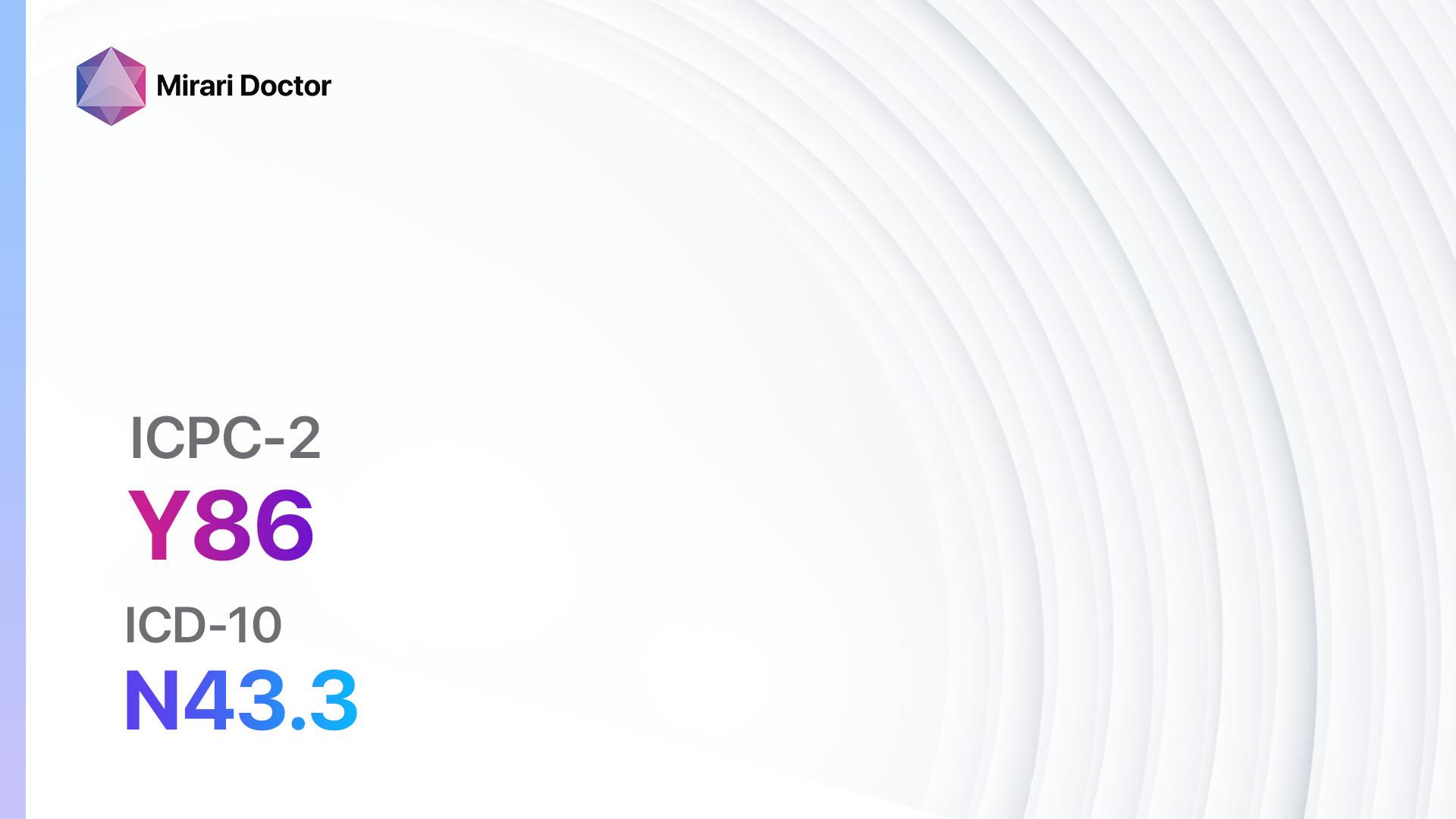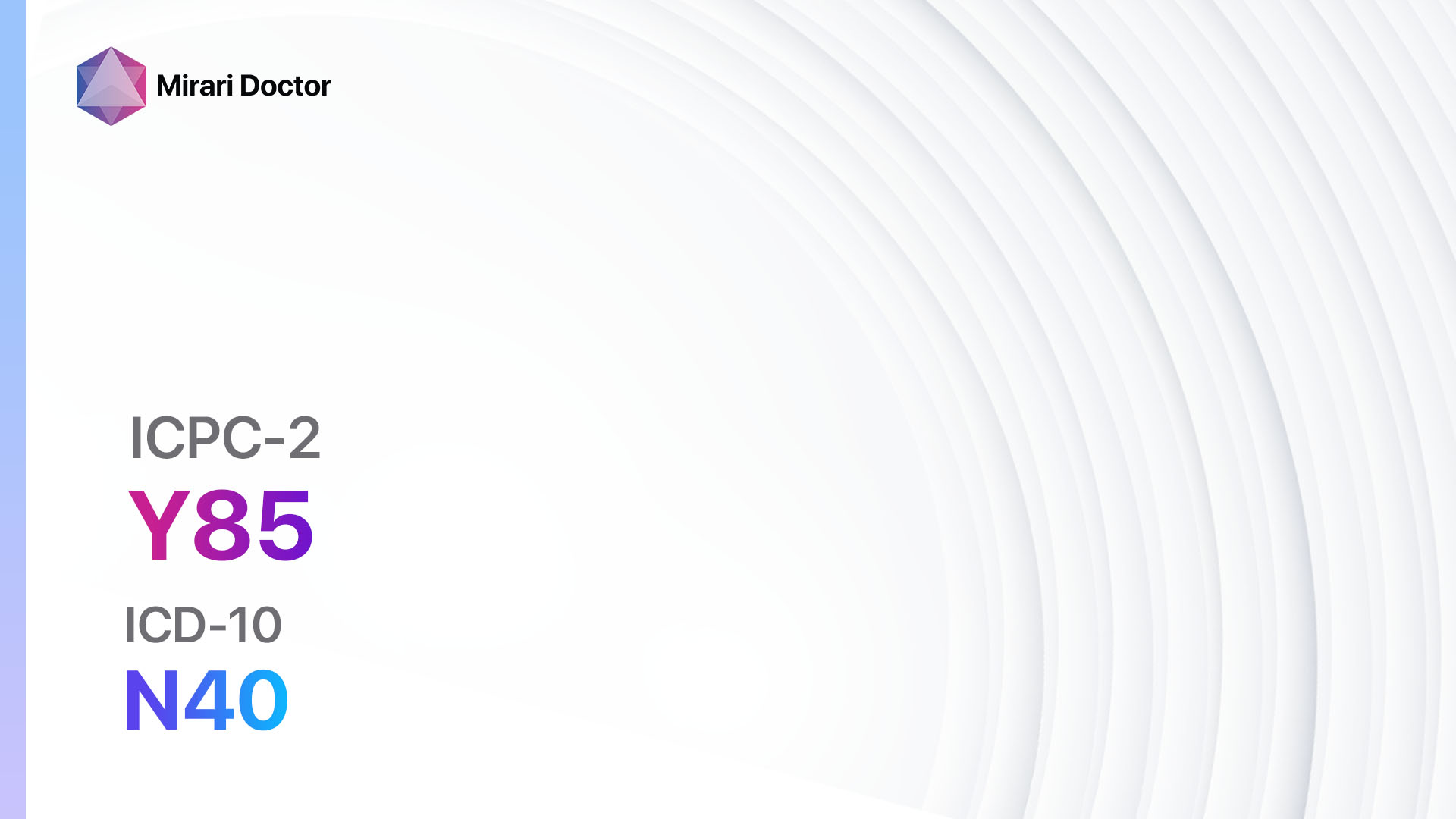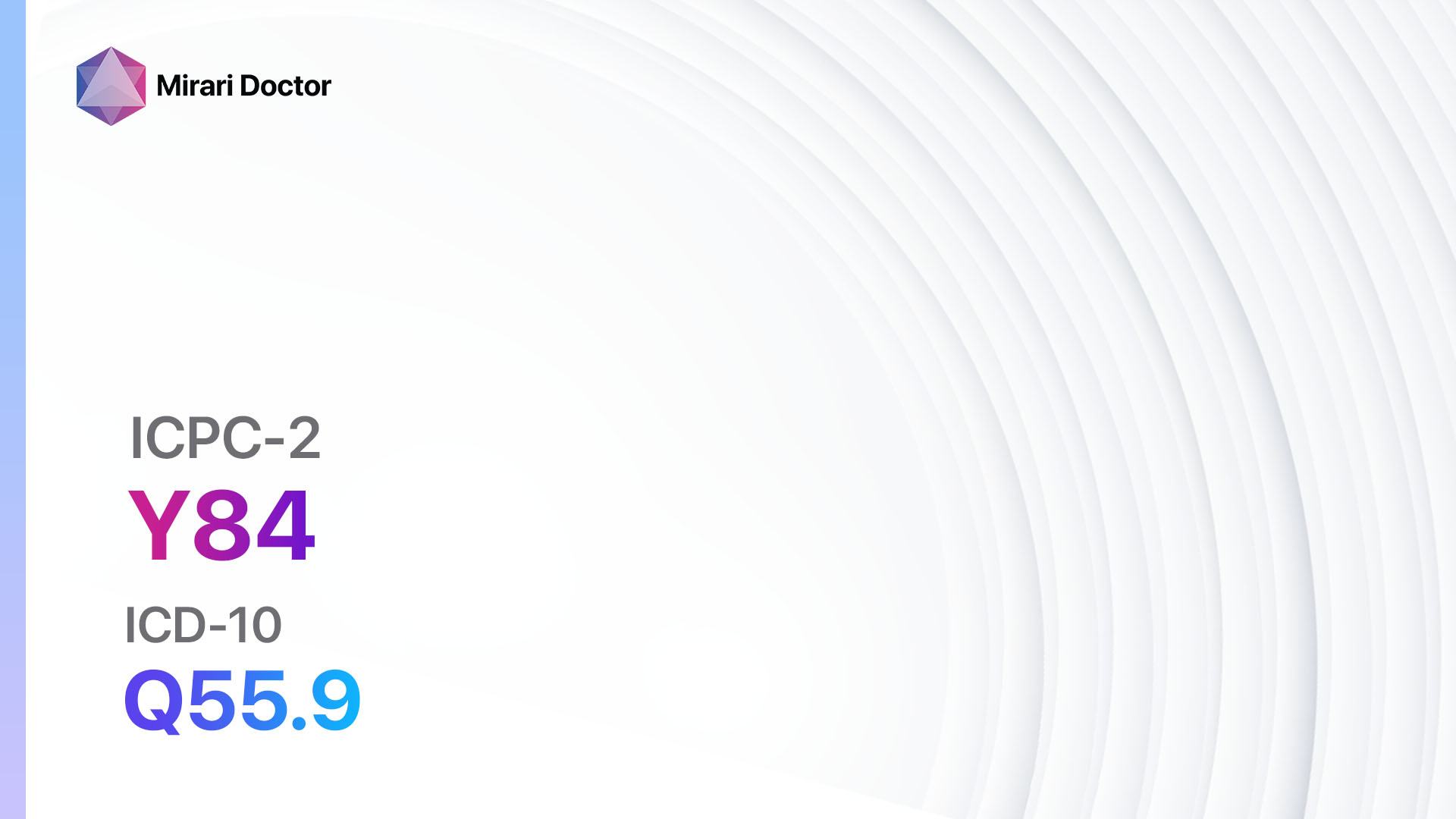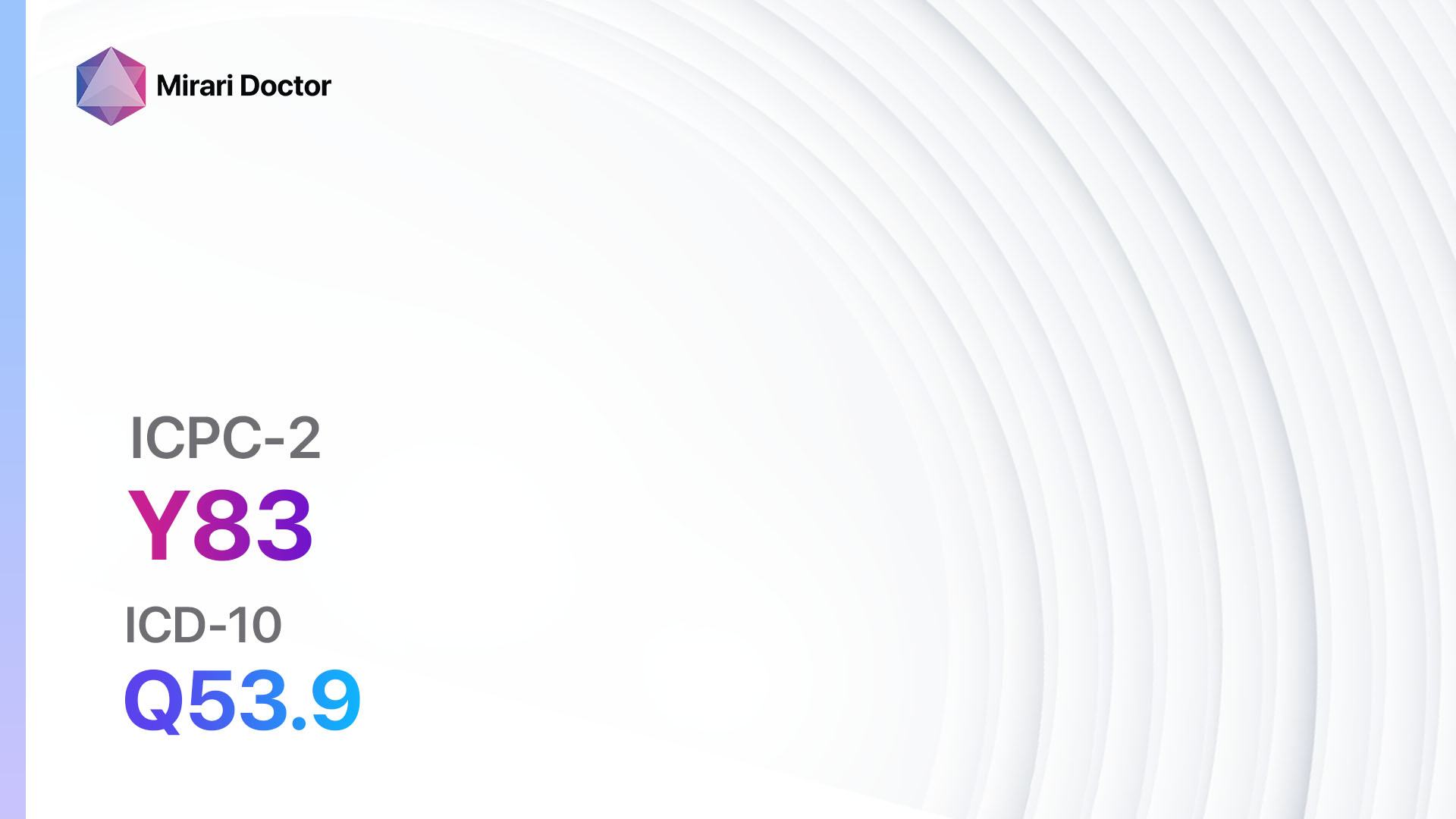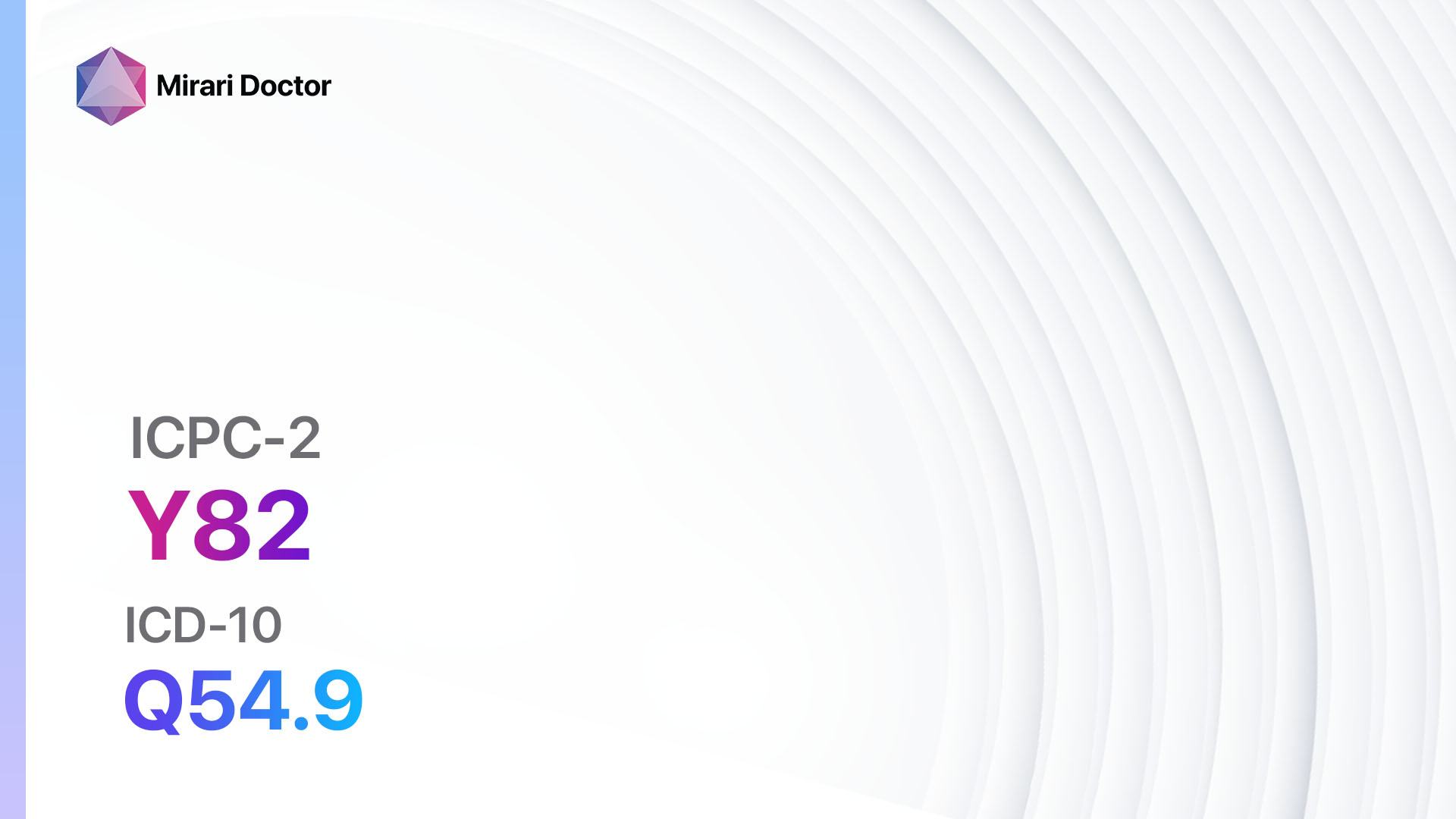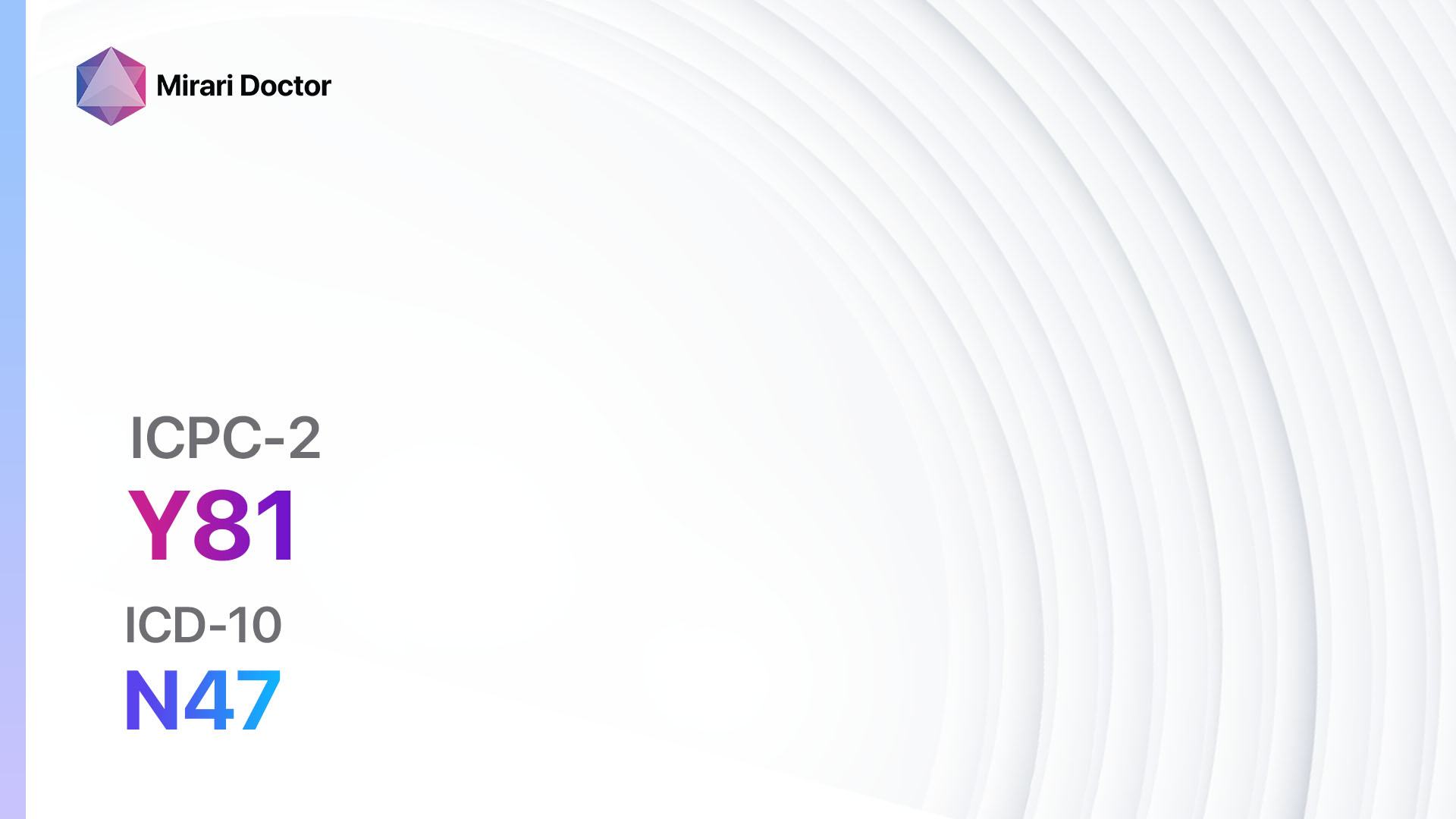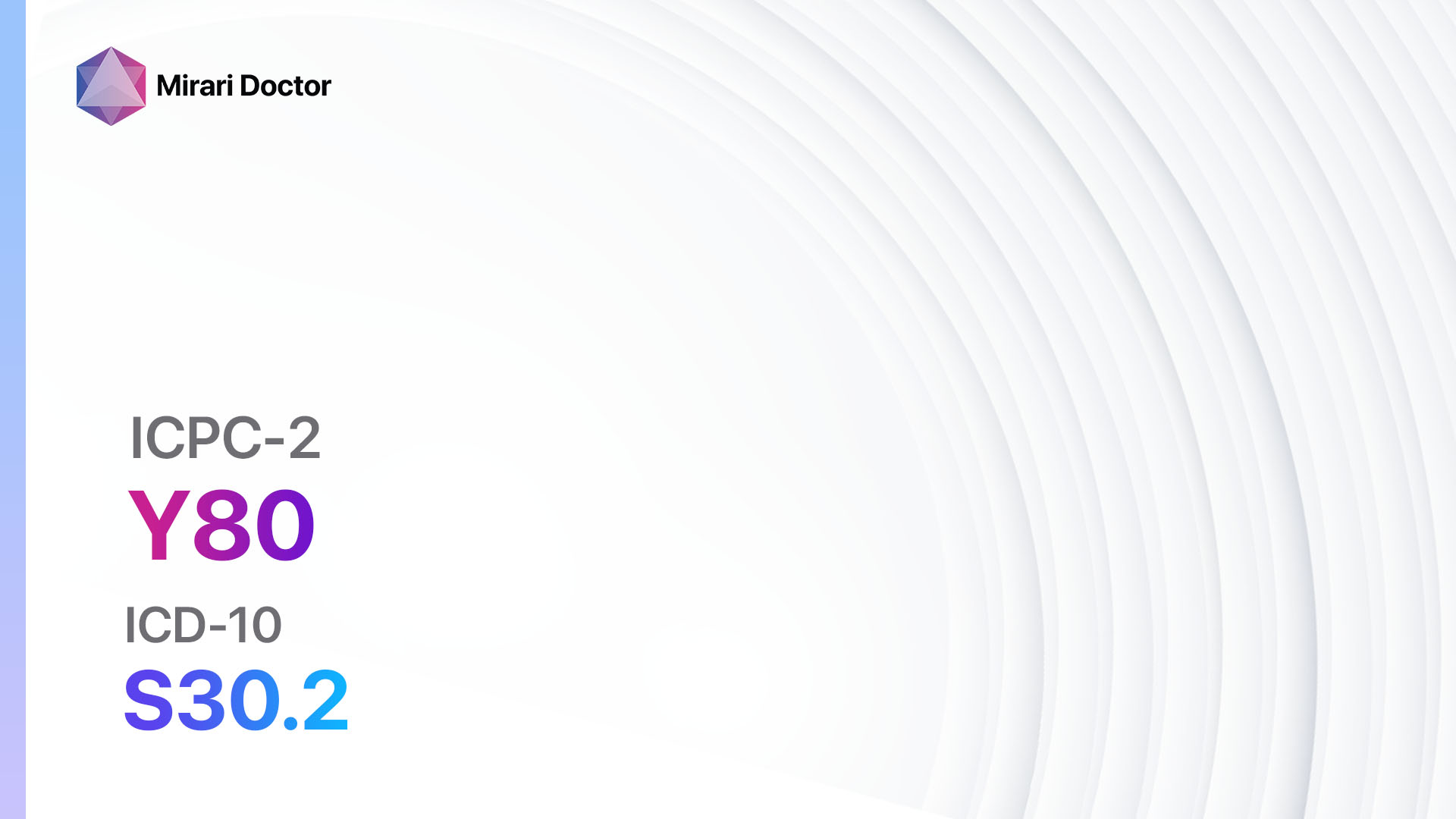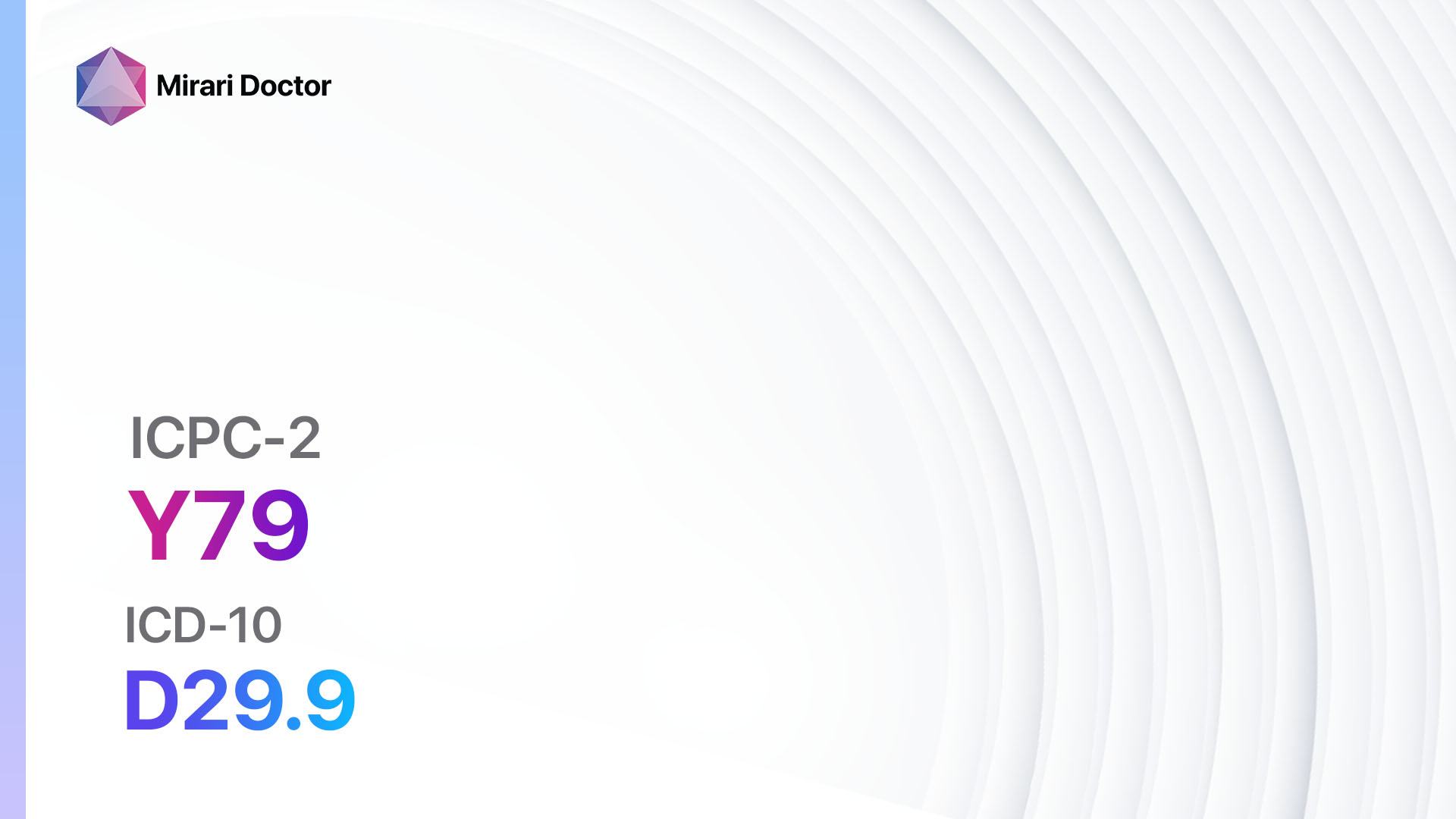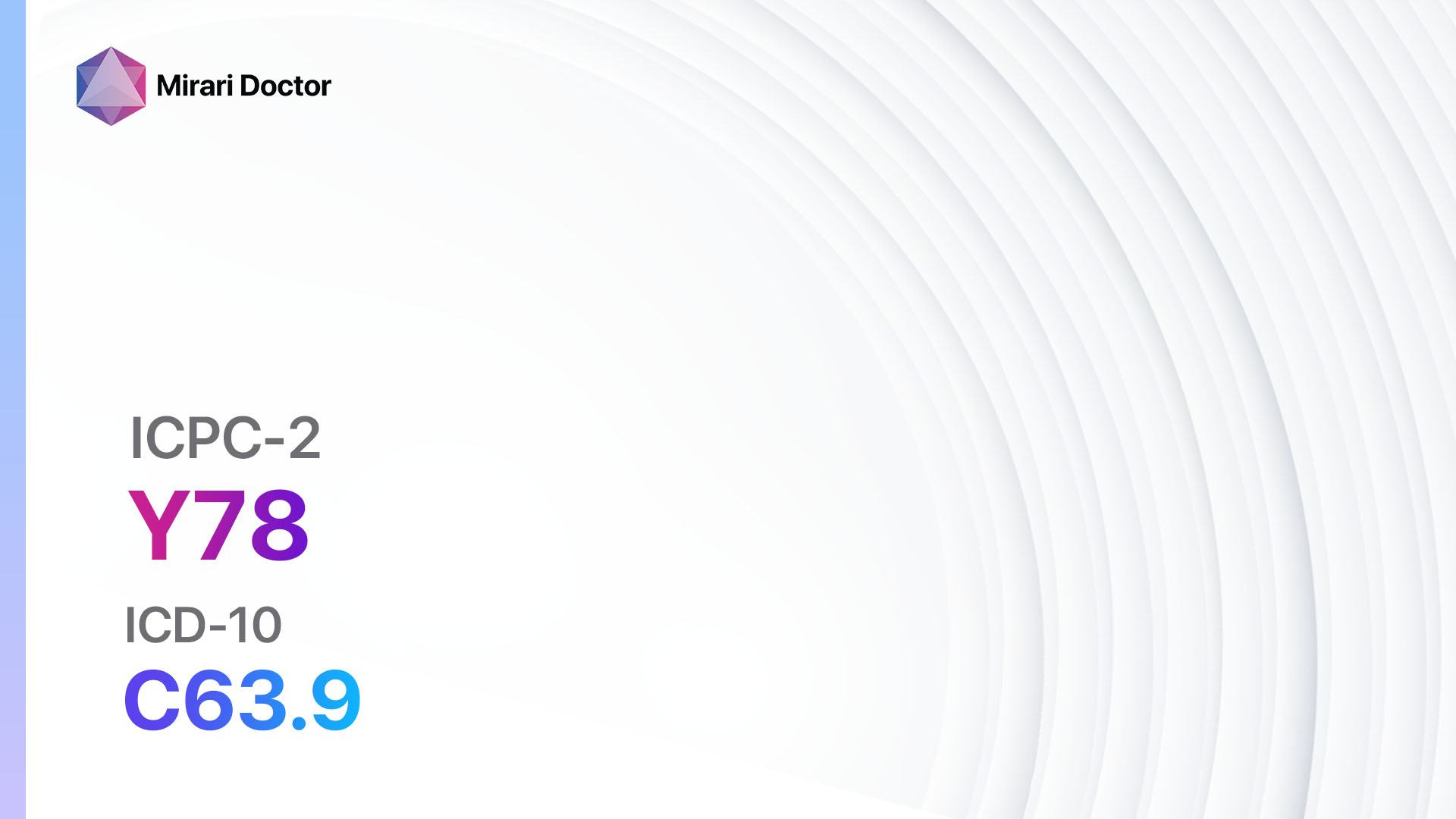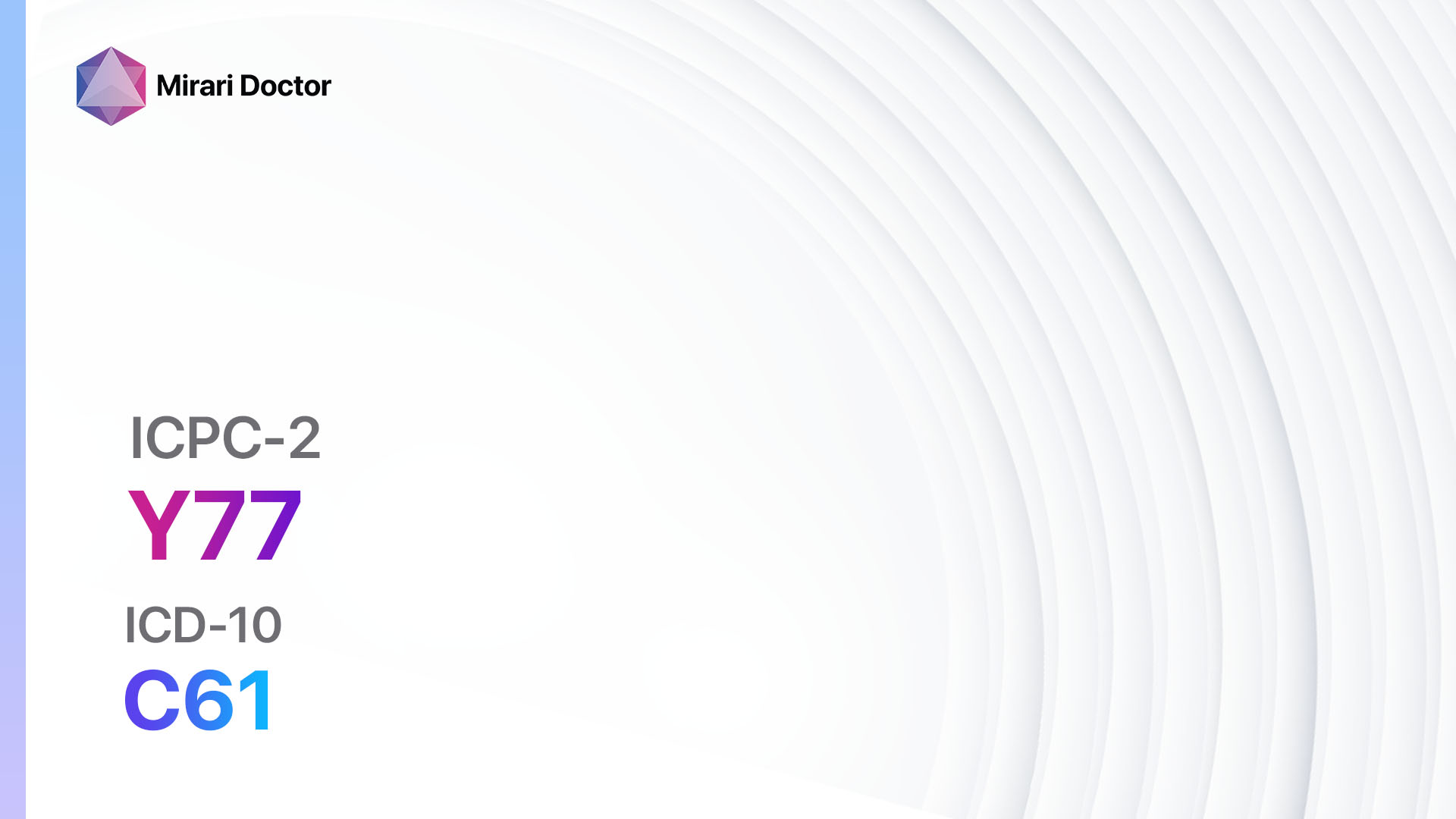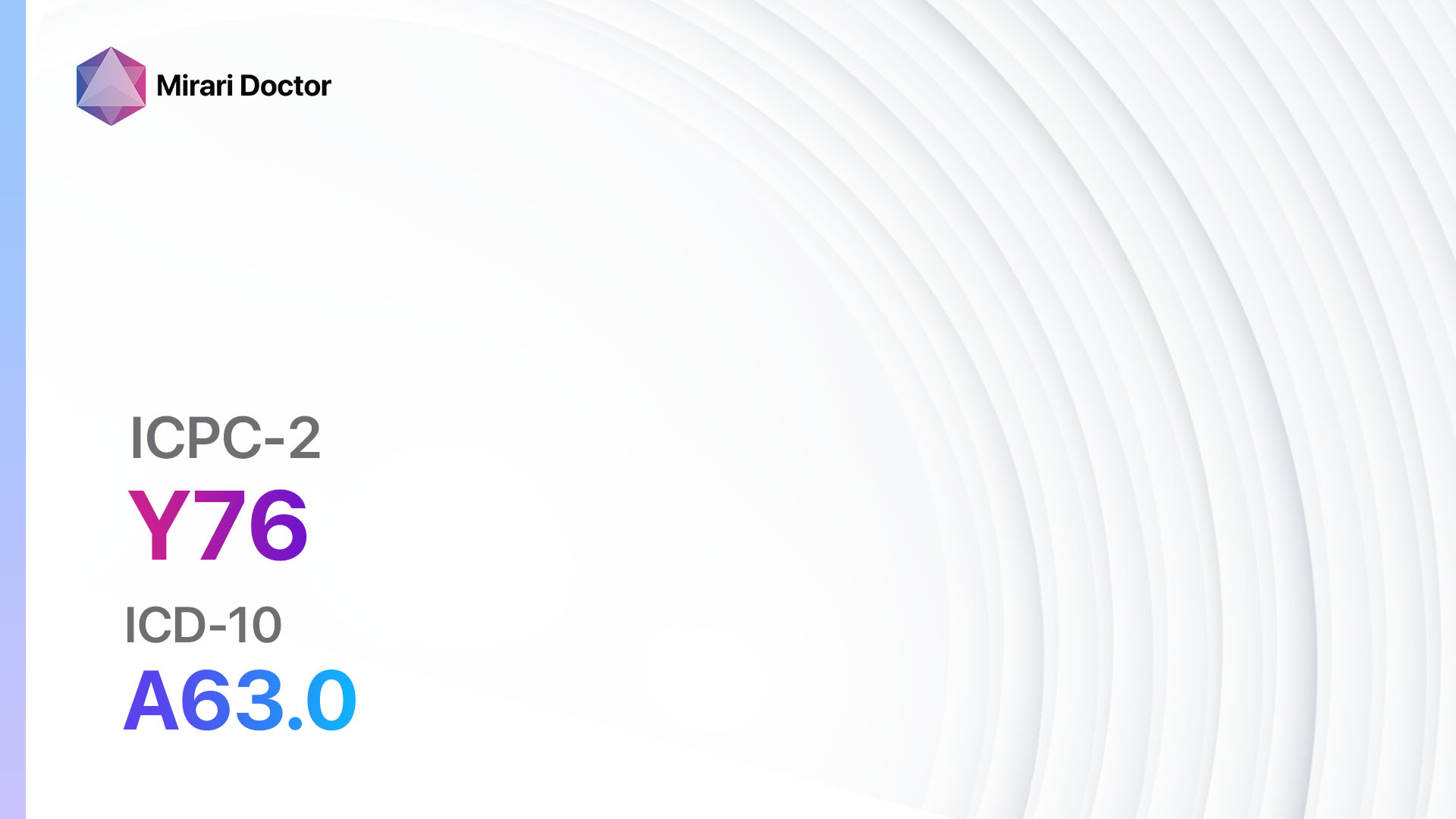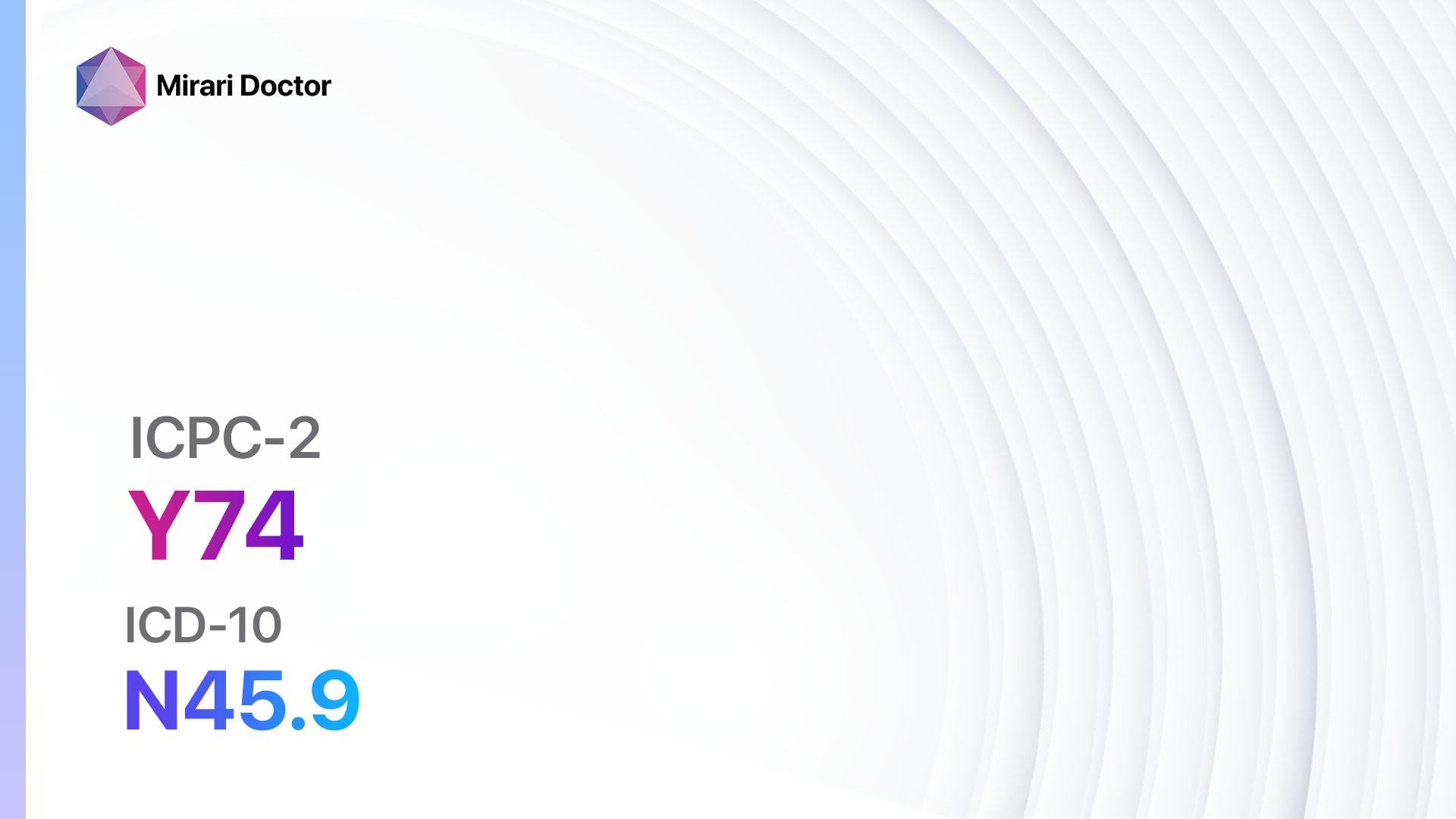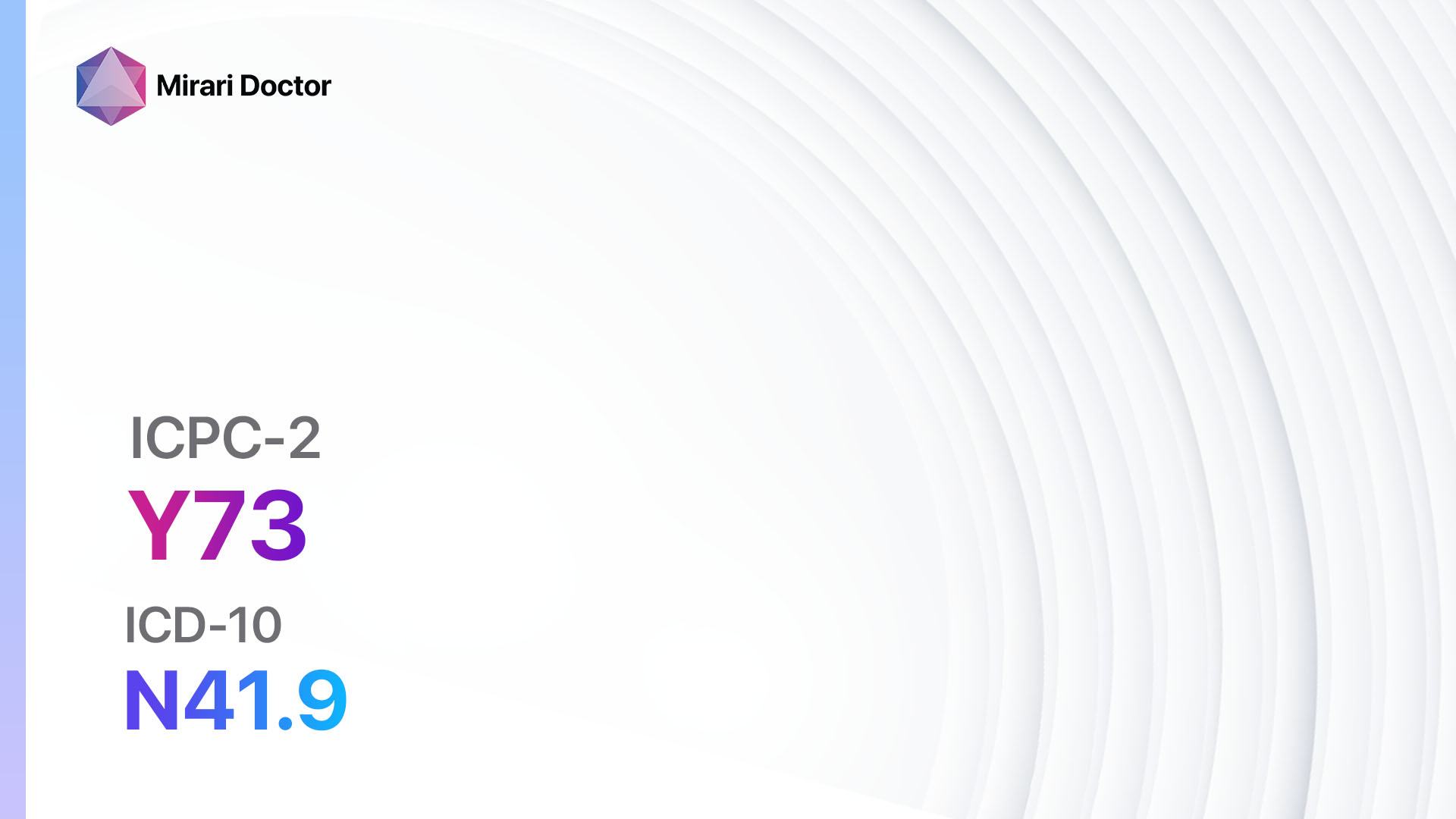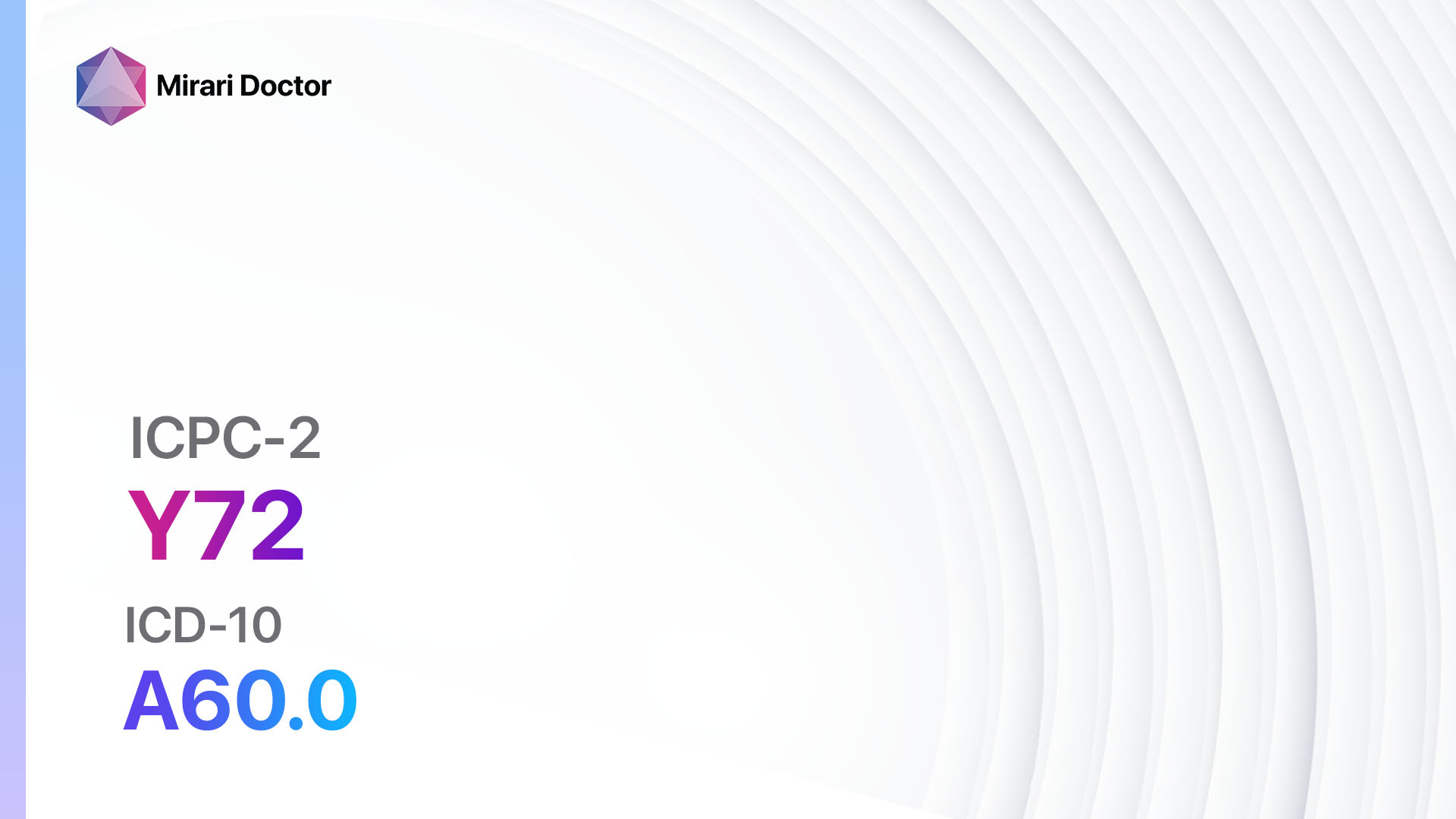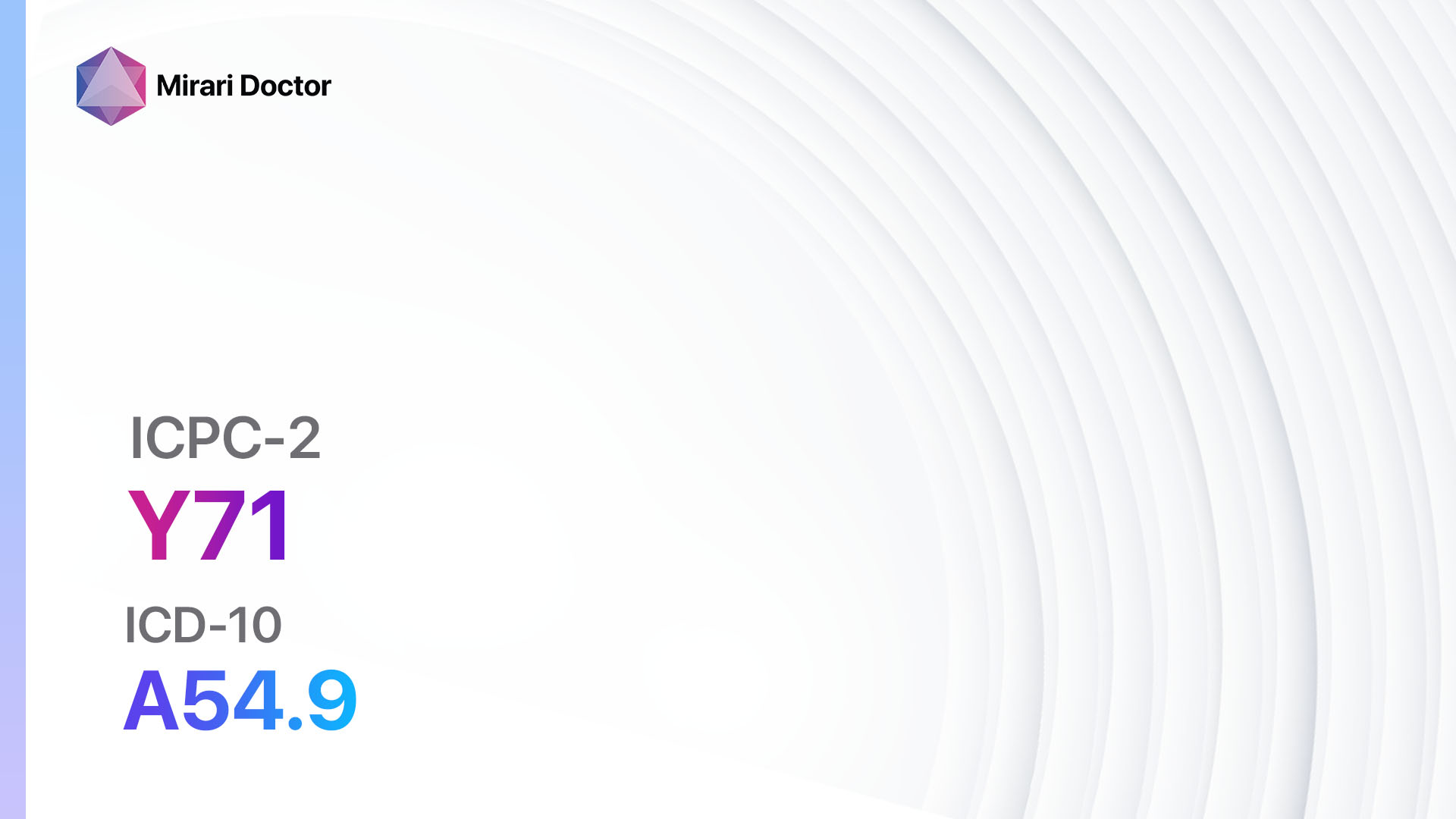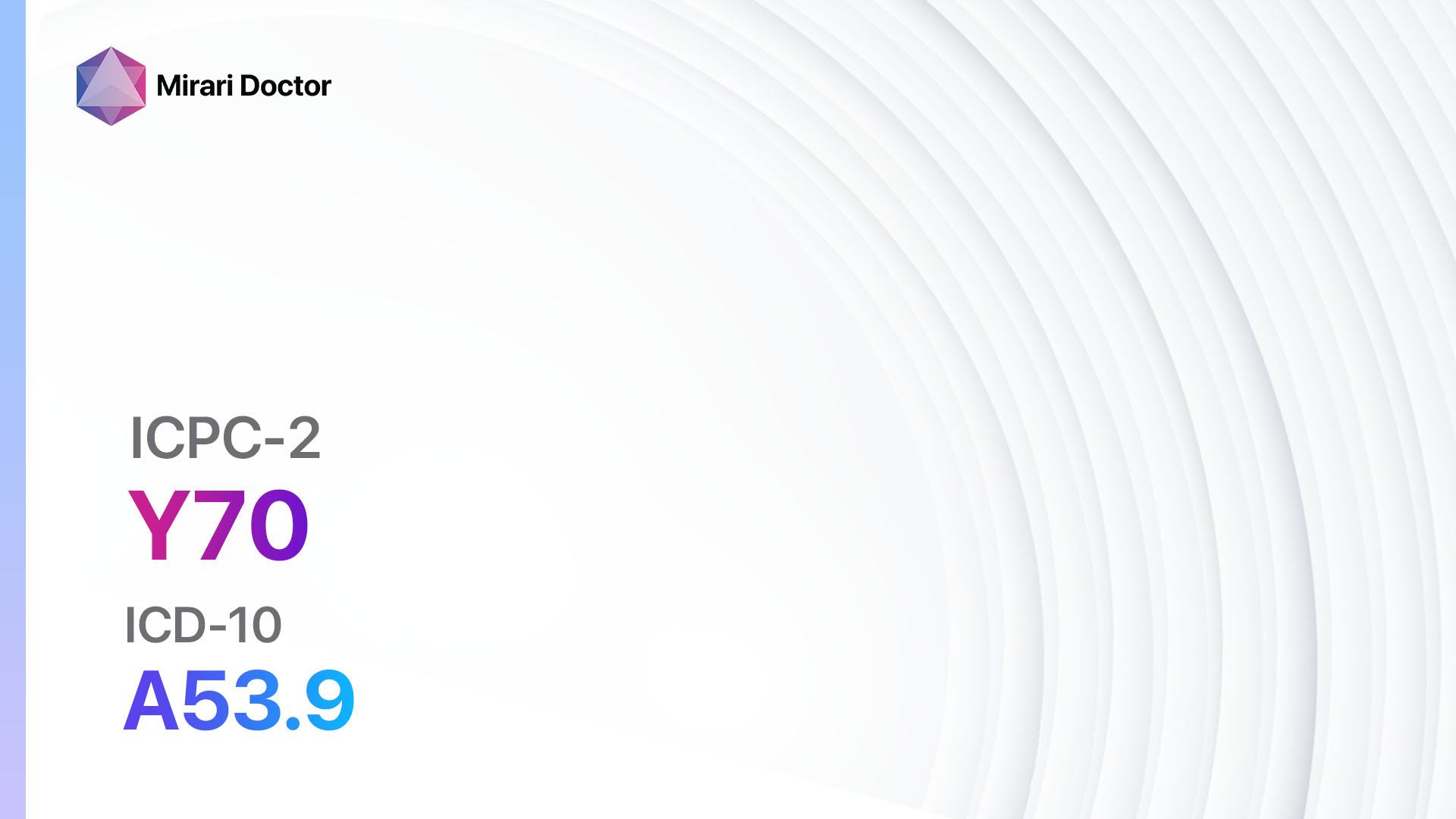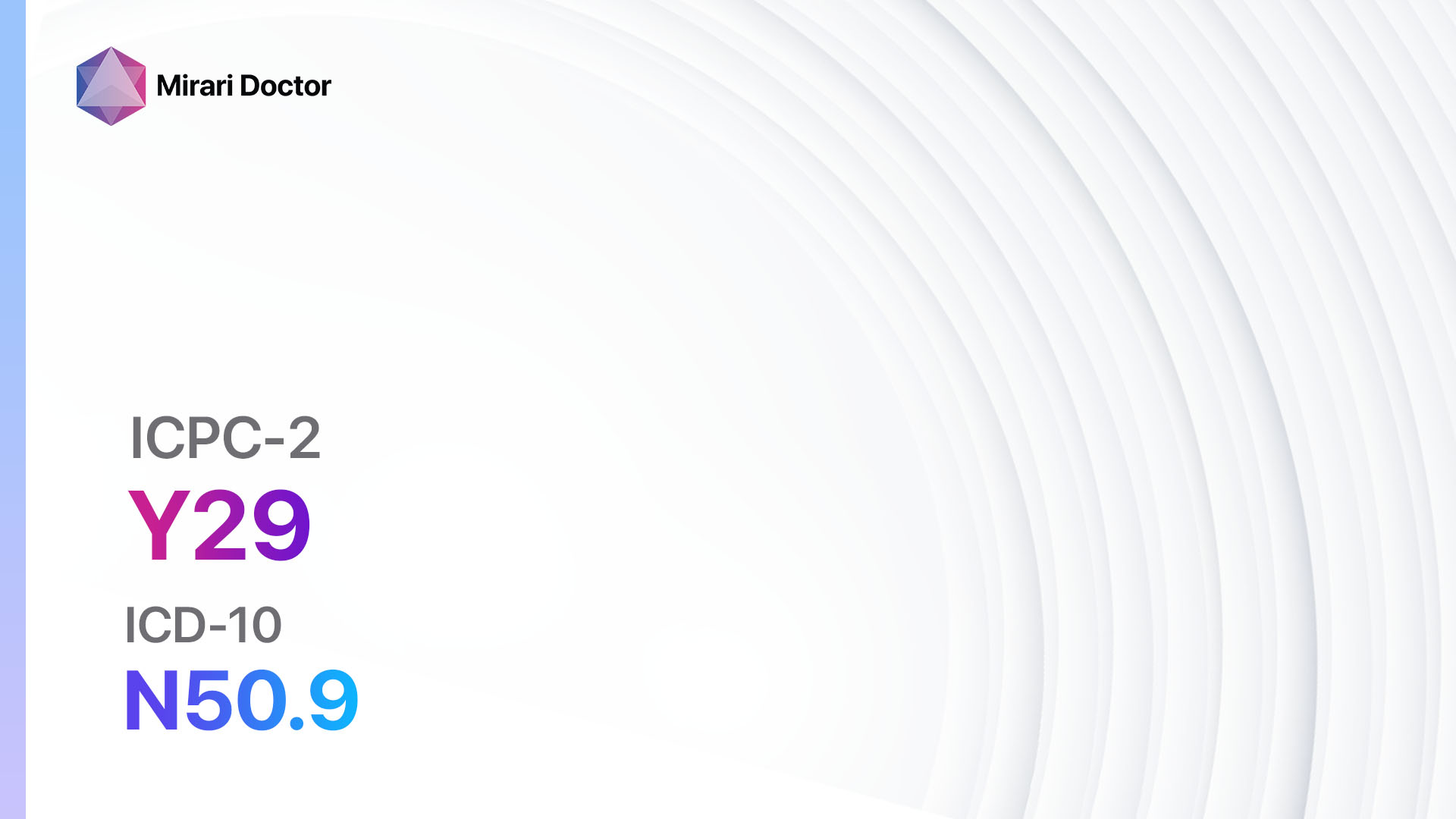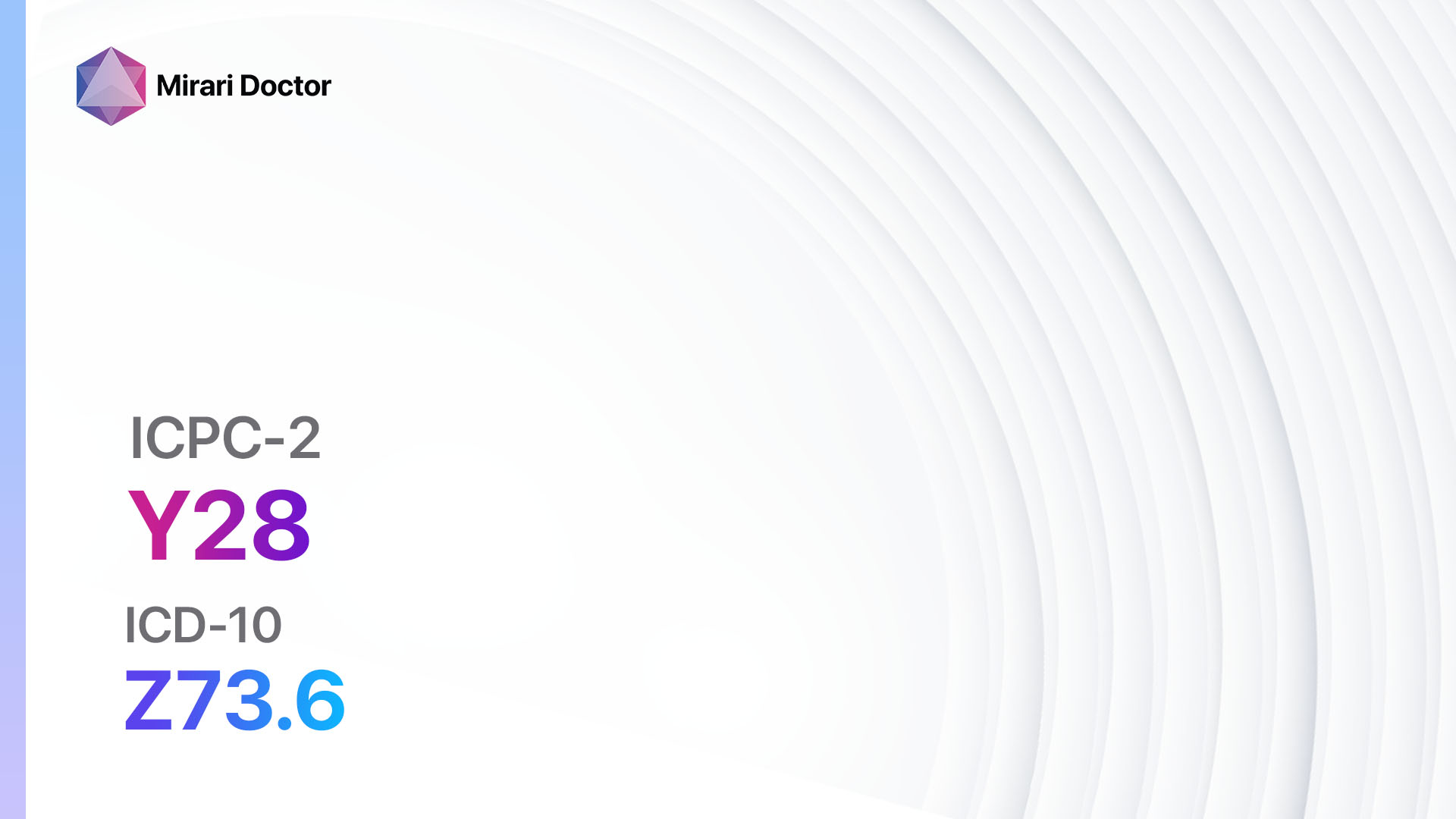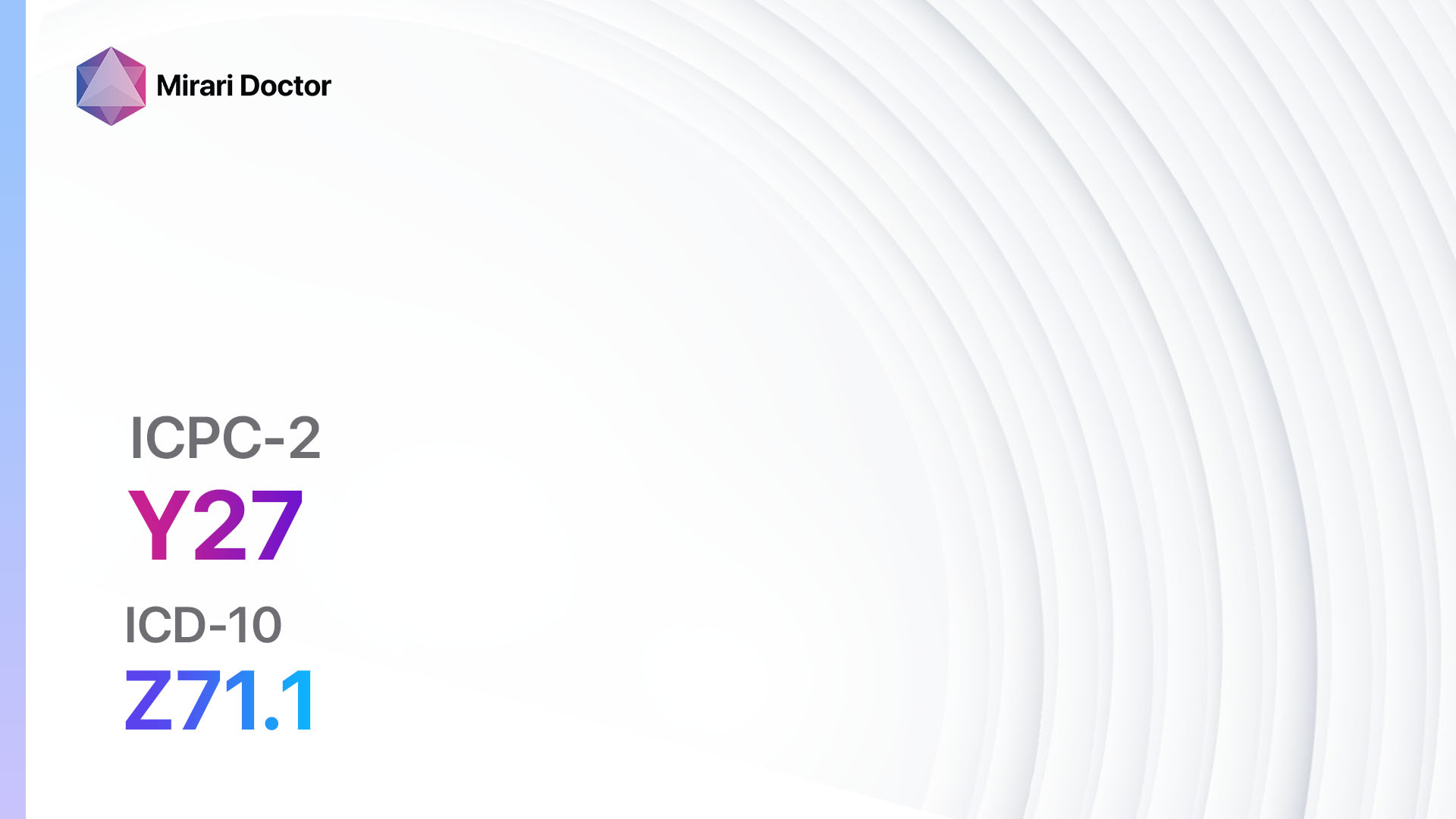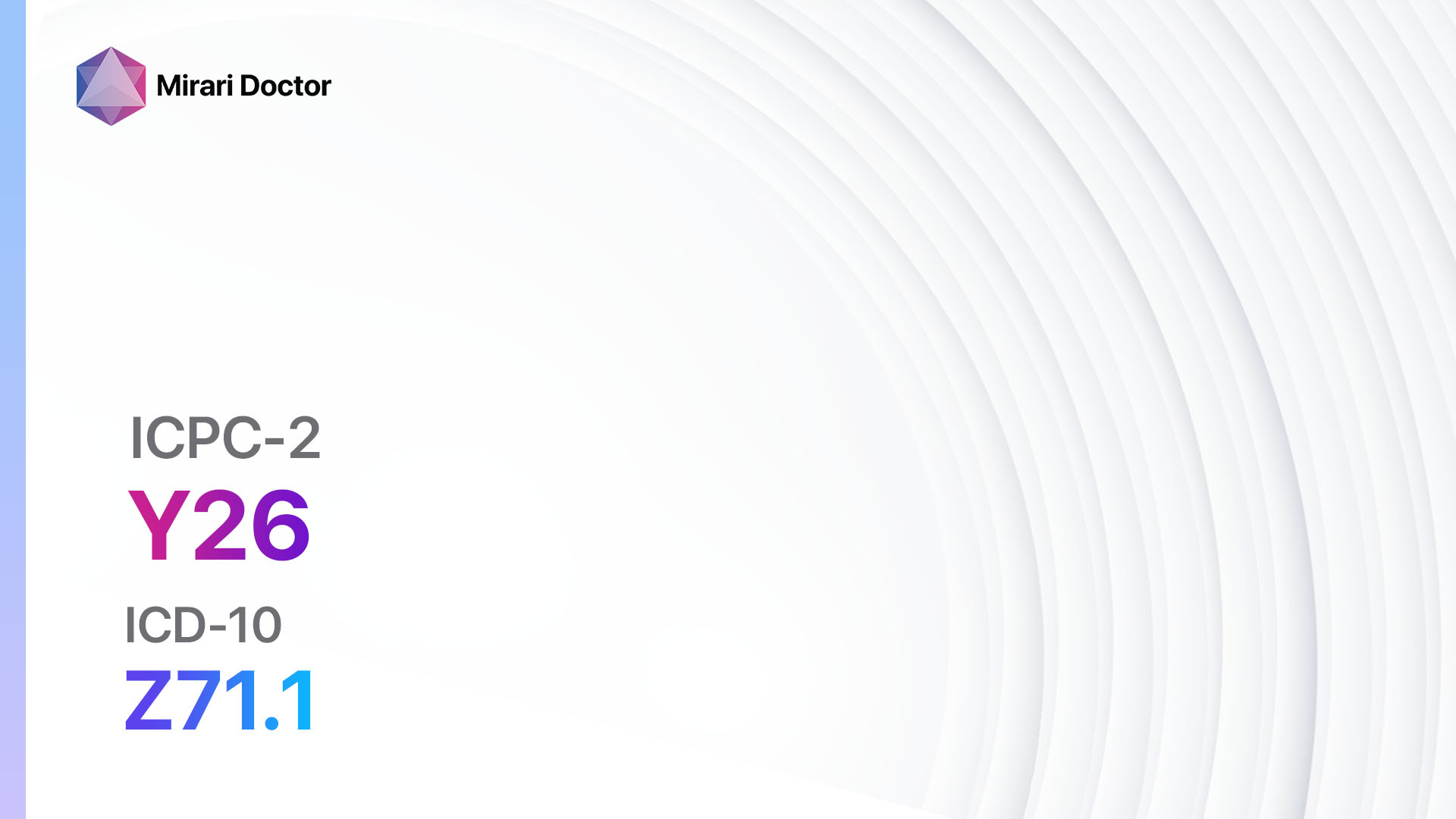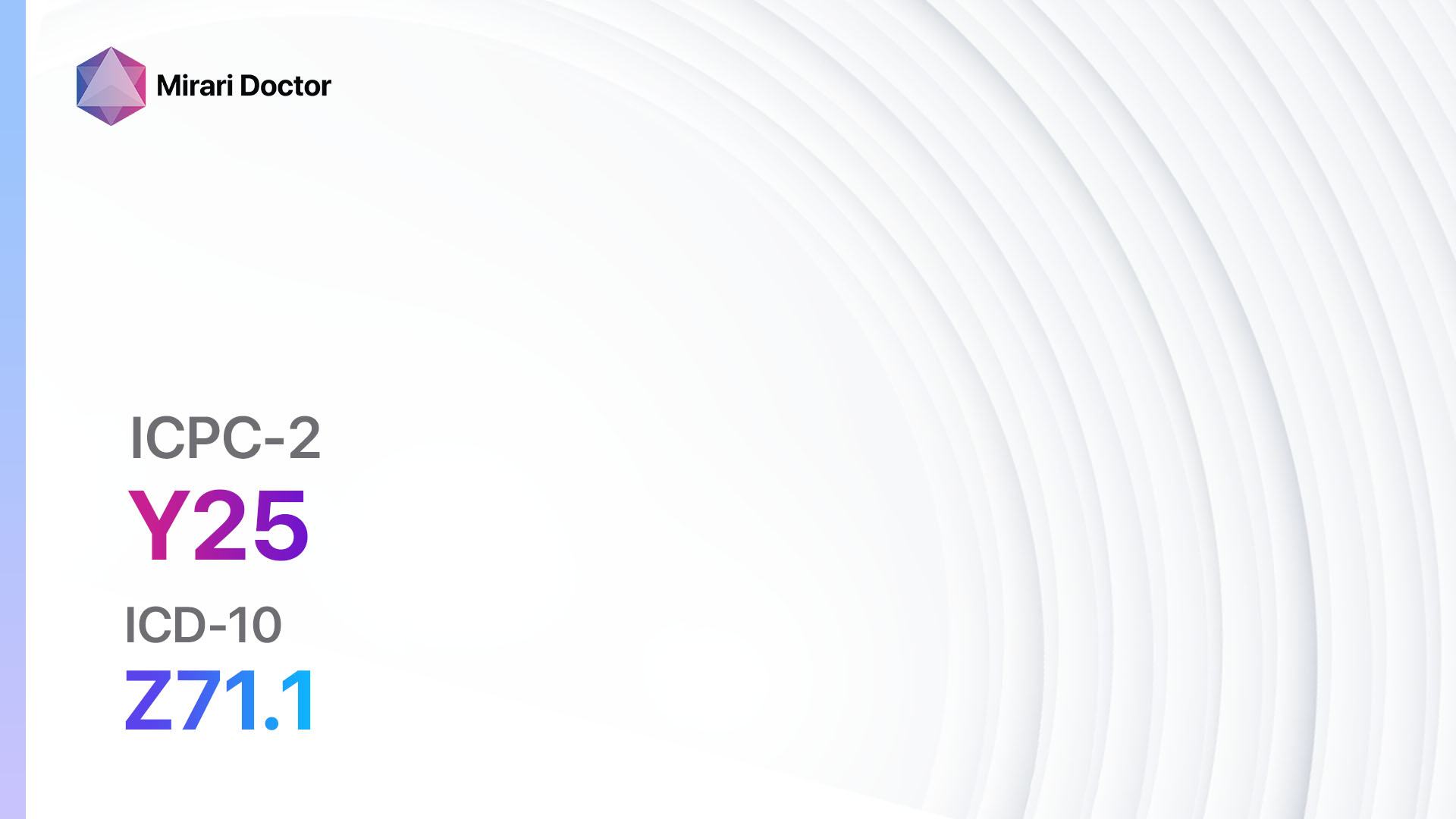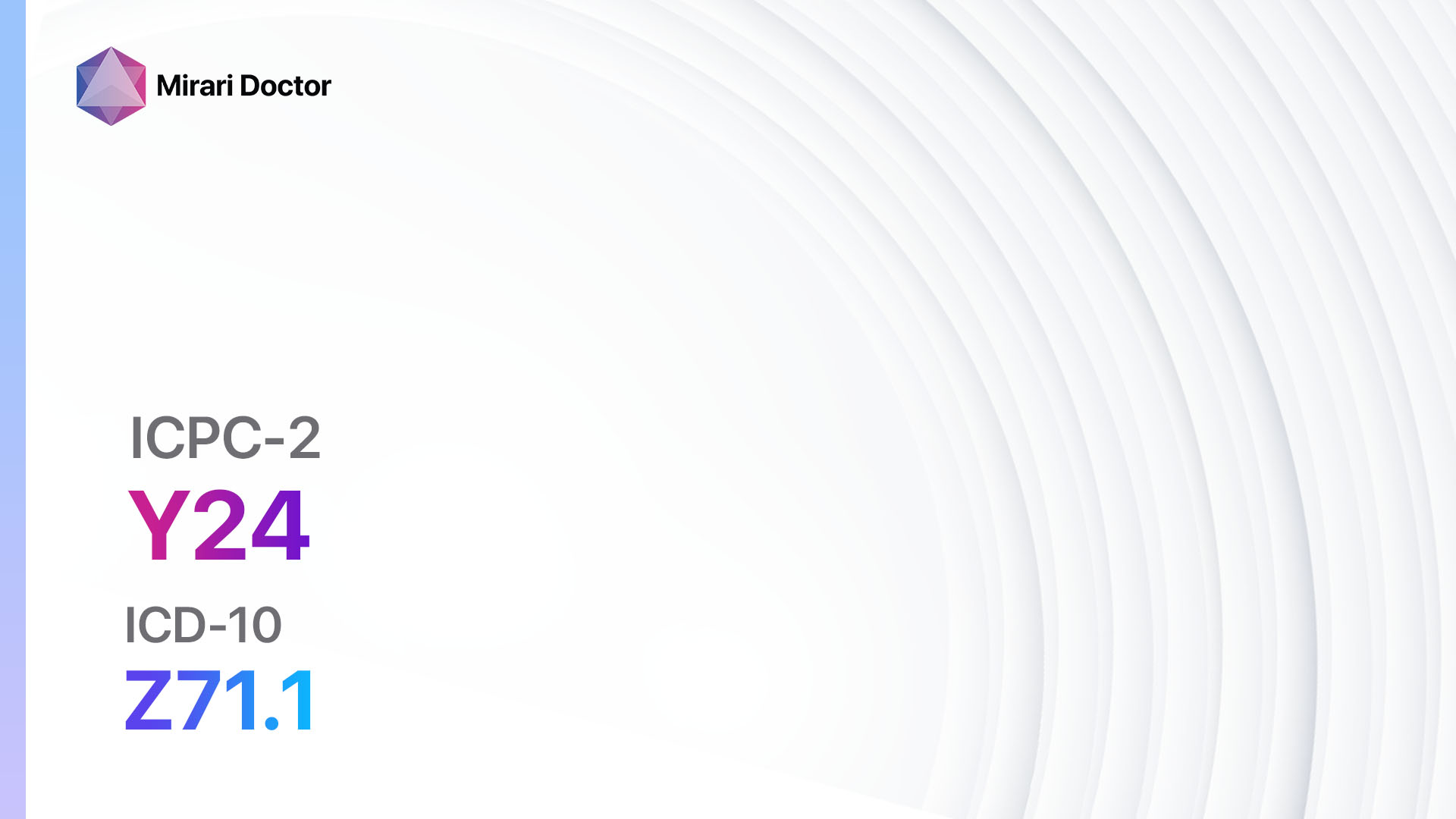
Introduction
Pain in the penis can be a distressing symptom that may indicate an underlying medical condition. This guide aims to provide healthcare professionals with a comprehensive approach to diagnosing and managing pain in the penis. By understanding the symptoms, causes, and appropriate diagnostic steps, healthcare professionals can effectively identify the underlying cause and provide appropriate interventions for their patients.
Codes
Symptoms
- Pain during erection
- Pain during sexual intercourse
- Pain during urination
- Pain at rest
Pain in the penis can manifest in various ways, and the specific symptoms may vary depending on the underlying cause[3]. It is important to gather a thorough medical history and perform a physical examination to accurately diagnose the condition.
Causes
- Urinary tract infection
- Sexually transmitted infections (STIs) such as gonorrhea or chlamydia
- Prostatitis
- Peyronie’s disease
- Balanitis
- Trauma or injury
- Urethritis
- Phimosis
- Epididymitis
These are some of the potential causes of pain in the penis[4]. It is essential to consider the patient’s medical history, sexual history, and risk factors when assessing the likely cause of the pain.
Diagnostic Steps
Medical History
- Assess the patient’s medical history, including any previous episodes of pain in the penis, history of STIs, or urinary tract infections.
- Inquire about recent sexual activity and potential exposure to STIs.
- Ask about any trauma or injury to the genital area.
- Evaluate the presence of any urinary symptoms, such as frequency or urgency[5].
Physical Examination
- Perform a thorough physical examination of the genital area, including inspection of the penis, scrotum, and surrounding skin.
- Palpate the penis for any areas of tenderness or swelling.
- Assess the presence of any penile curvature or plaques[6].
Laboratory Tests
- Urine culture and sensitivity to assess for urinary tract infection or urethritis.
- STI testing, including tests for gonorrhea and chlamydia.
- Blood tests to evaluate for systemic infections or inflammatory markers.
- Swab test for suspected lesions or ulcers[7].
Diagnostic Imaging
- Ultrasound of the penis to assess for structural abnormalities or inflammation.
- MRI or CT scan may be warranted in specific cases to further evaluate penile structures[8].
Other Tests
- Uroflowmetry to evaluate urinary flow and rule out any functional causes of pain.
- Cystoscopy to visualize the urethra and bladder for any abnormalities.
- Biopsy may be necessary in cases of suspected malignancy[9].
Follow-up and Patient Education
- Provide appropriate pain management strategies.
- Educate the patient about the underlying cause of their pain and discuss treatment options.
- Schedule follow-up appointments to monitor the patient’s progress and adjust treatment as needed[10].
Possible Interventions
Traditional Interventions
Medications:
Top 5 drugs for pain in the penis:
- Antibiotics (e.g., Ciprofloxacin):
- Cost: $10-$50 for a course of treatment.
- Contraindications: Hypersensitivity to fluoroquinolones.
- Side effects: Nausea, diarrhea, headache.
- Severe side effects: Tendon rupture, allergic reactions.
- Drug interactions: Warfarin, theophylline.
- Warning: Increased risk of C. difficile infection.
- Nonsteroidal anti-inflammatory drugs (NSAIDs) (e.g., Ibuprofen):
- Cost: $5-$20 for a bottle of tablets.
- Contraindications: Active peptic ulcer disease, history of gastrointestinal bleeding.
- Side effects: Upset stomach, heartburn.
- Severe side effects: Gastrointestinal bleeding, kidney damage.
- Drug interactions: Aspirin, other NSAIDs.
- Warning: Prolonged use may increase the risk of cardiovascular events.
- Alpha-blockers (e.g., Tamsulosin):
- Cost: $10-$50 for a month’s supply.
- Contraindications: Hypersensitivity to alpha-blockers.
- Side effects: Dizziness, headache, nasal congestion.
- Severe side effects: Orthostatic hypotension, priapism.
- Drug interactions: PDE5 inhibitors (e.g., sildenafil), nitrates.
- Warning: Risk of orthostatic hypotension, especially when starting treatment.
- Antiviral agents (e.g., Acyclovir):
- Cost: $10-$50 for a course of treatment.
- Contraindications: Hypersensitivity to acyclovir.
- Side effects: Nausea, vomiting, diarrhea.
- Severe side effects: Kidney damage, seizures.
- Drug interactions: Probenecid, nephrotoxic drugs.
- Warning: Adequate hydration is essential to prevent kidney damage.
- Topical corticosteroids (e.g., Betamethasone):
- Cost: $10-$30 for a tube of cream.
- Contraindications: Hypersensitivity to corticosteroids, skin infections.
- Side effects: Skin thinning, burning or stinging sensation.
- Severe side effects: Allergic reactions, adrenal suppression.
- Drug interactions: None significant.
- Warning: Prolonged use may lead to skin atrophy and increased risk of infections.
Surgical Procedures:
- Circumcision: Surgical removal of the foreskin. Cost: $1,000-$3,000.
- Urethroplasty: Reconstruction of the urethra. Cost: $5,000-$10,000.
- Penile prosthesis implantation: Surgical placement of an inflatable or malleable penile prosthesis. Cost: $15,000-$30,000.
Alternative Interventions
- Acupuncture: May help alleviate pain and improve blood circulation. Cost: $60-$120 per session.
- Pelvic floor exercises: Strengthening the pelvic floor muscles may provide relief from pain. Cost: Free.
- Herbal supplements: Certain herbs, such as saw palmetto or ginseng, may have potential benefits. Cost: Varies depending on the specific supplement.
- Massage therapy: May help relax the pelvic muscles and reduce pain. Cost: $60-$120 per session.
- Psychotherapy: Can be beneficial for addressing underlying psychological factors contributing to the pain. Cost: Varies depending on the therapist.
Lifestyle Interventions
- Avoiding irritants: Identifying and avoiding potential irritants, such as harsh soaps or certain fabrics, may help reduce pain. Cost: Varies.
- Stress management: Engaging in stress-reducing activities, such as yoga or meditation, may alleviate pain. Cost: Varies.
- Warm compress: Applying a warm compress to the affected area may provide temporary relief. Cost: Varies.
- Dietary modifications: Some individuals may find that avoiding certain foods, such as spicy or acidic foods, helps reduce pain. Cost: Varies.
- Sexual counseling: Addressing any psychological or emotional factors related to pain during sexual activity can be beneficial. Cost: Varies, depending on the therapist.
It is important to note that the cost ranges provided are approximate and may vary depending on the location and availability of the interventions. Healthcare professionals should consider the patient’s individual circumstances when recommending interventions and discuss any potential risks or benefits.
Mirari Cold Plasma Alternative Intervention
Understanding Mirari Cold Plasma
- Safe and Non-Invasive Treatment: Mirari Cold Plasma is a safe and non-invasive treatment option for various skin conditions. It does not require incisions, minimizing the risk of scarring, bleeding, or tissue damage.
- Efficient Extraction of Foreign Bodies: Mirari Cold Plasma facilitates the removal of foreign bodies from the skin by degrading and dissociating organic matter, allowing easier access and extraction.
- Pain Reduction and Comfort: Mirari Cold Plasma has a local analgesic effect, providing pain relief during the treatment, making it more comfortable for the patient.
- Reduced Risk of Infection: Mirari Cold Plasma has antimicrobial properties, effectively killing bacteria and reducing the risk of infection.
- Accelerated Healing and Minimal Scarring: Mirari Cold Plasma stimulates wound healing and tissue regeneration, reducing healing time and minimizing the formation of scars.
Mirari Cold Plasma Prescription
Video instructions for using Mirari Cold Plasma Device – Y01 Pain in penis (ICD-10:N48.9)
| Mild | Moderate | Severe |
| Mode setting: 1 (Infection) Location: 0 (Localized) Morning: 15 minutes, Evening: 15 minutes |
Mode setting: 1 (Infection) Location: 0 (Localized) Morning: 30 minutes, Lunch: 30 minutes, Evening: 30 minutes |
Mode setting: 1 (Infection) Location: 0 (Localized) Morning: 30 minutes, Lunch: 30 minutes, Evening: 30 minutes |
| Mode setting: 2 (Wound Healing) Location: 0 (Localized) Morning: 15 minutes, Evening: 15 minutes |
Mode setting: 2 (Wound Healing) Location: 0 (Localized) Morning: 30 minutes, Lunch: 30 minutes, Evening: 30 minutes |
Mode setting: 2 (Wound Healing) Location: 0 (Localized) Morning: 30 minutes, Lunch: 30 minutes, Evening: 30 minutes |
| Mode setting: 3 (Antiviral Therapy) Location: 0 (Localized) Morning: 15 minutes, Evening: 15 minutes |
Mode setting: 3 (Antiviral Therapy) Location: 0 (Localized) Morning: 30 minutes, Lunch: 30 minutes, Evening: 30 minutes |
Mode setting: 3 (Antiviral Therapy) Location: 0 (Localized) Morning: 30 minutes, Lunch: 30 minutes, Evening: 30 minutes |
| Mode setting: 7 (Immunotherapy) Location: 1 (Sacrum) Morning: 15 minutes, Evening: 15 minutes |
Mode setting: 7 (Immunotherapy) Location: 1 (Sacrum) Morning: 30 minutes, Lunch: 30 minutes, Evening: 30 minutes |
Mode setting: 7 (Immunotherapy) Location: 1 (Sacrum) Morning: 30 minutes, Lunch: 30 minutes, Evening: 30 minutes |
| Total Morning: 60 minutes approx. $10 USD, Evening: 60 minutes approx. $10 USD |
Total Morning: 120 minutes approx. $20 USD, Lunch: 120 minutes approx. $20 USD, Evening: 120 minutes approx. $20 USD, |
Total Morning: 120 minutes approx. $20 USD, Lunch: 120 minutes approx. $20 USD, Evening: 120 minutes approx. $20 USD, |
| Usual treatment for 7-60 days approx. $140 USD – $1200 USD | Usual treatment for 6-8 weeks approx. $2,520 USD – $3,360 USD |
Usual treatment for 3-6 months approx. $5,400 USD – $10,800 USD
|
 |
|
Use the Mirari Cold Plasma device to treat Pain in penis effectively.
WARNING: MIRARI COLD PLASMA IS DESIGNED FOR THE HUMAN BODY WITHOUT ANY ARTIFICIAL OR THIRD PARTY PRODUCTS. USE OF OTHER PRODUCTS IN COMBINATION WITH MIRARI COLD PLASMA MAY CAUSE UNPREDICTABLE EFFECTS, HARM OR INJURY. PLEASE CONSULT A MEDICAL PROFESSIONAL BEFORE COMBINING ANY OTHER PRODUCTS WITH USE OF MIRARI.
Step 1: Cleanse the Skin
- Start by cleaning the affected area of the skin with a gentle cleanser or mild soap and water. Gently pat the area dry with a clean towel.
Step 2: Prepare the Mirari Cold Plasma device
- Ensure that the Mirari Cold Plasma device is fully charged or has fresh batteries as per the manufacturer’s instructions. Make sure the device is clean and in good working condition.
- Switch on the Mirari device using the power button or by following the specific instructions provided with the device.
- Some Mirari devices may have adjustable settings for intensity or treatment duration. Follow the manufacturer’s instructions to select the appropriate settings based on your needs and the recommended guidelines.
Step 3: Apply the Device
- Place the Mirari device in direct contact with the affected area of the skin. Gently glide or hold the device over the skin surface, ensuring even coverage of the area experiencing.
- Slowly move the Mirari device in a circular motion or follow a specific pattern as indicated in the user manual. This helps ensure thorough treatment coverage.
Step 4: Monitor and Assess:
- Keep track of your progress and evaluate the effectiveness of the Mirari device in managing your Pain in penis. If you have any concerns or notice any adverse reactions, consult with your health care professional.
Note
This guide is for informational purposes only and should not replace the advice of a medical professional. Always consult with your healthcare provider or a qualified medical professional for personal advice, diagnosis, or treatment. Do not solely rely on the information presented here for decisions about your health. Use of this information is at your own risk. The authors of this guide, nor any associated entities or platforms, are not responsible for any potential adverse effects or outcomes based on the content.
Mirari Cold Plasma System Disclaimer
- Purpose: The Mirari Cold Plasma System is a Class 2 medical device designed for use by trained healthcare professionals. It is registered for use in Thailand and Vietnam. It is not intended for use outside of these locations.
- Informational Use: The content and information provided with the device are for educational and informational purposes only. They are not a substitute for professional medical advice or care.
- Variable Outcomes: While the device is approved for specific uses, individual outcomes can differ. We do not assert or guarantee specific medical outcomes.
- Consultation: Prior to utilizing the device or making decisions based on its content, it is essential to consult with a Certified Mirari Tele-Therapist and your medical healthcare provider regarding specific protocols.
- Liability: By using this device, users are acknowledging and accepting all potential risks. Neither the manufacturer nor the distributor will be held accountable for any adverse reactions, injuries, or damages stemming from its use.
- Geographical Availability: This device has received approval for designated purposes by the Thai and Vietnam FDA. As of now, outside of Thailand and Vietnam, the Mirari Cold Plasma System is not available for purchase or use.
References
- World Health Organization. International Classification of Primary Care, Second edition (ICPC-2). https://www.who.int/standards/classifications/other-classifications/international-classification-of-primary-care
- World Health Organization. International Statistical Classification of Diseases and Related Health Problems 10th Revision (ICD-10). https://icd.who.int/browse10/2019/en#/N48.9
- Healthline. Possible Causes of Penis Pain and How to Treat It. https://www.healthline.com/health/penis-pain
- MedlinePlus. Penis pain. https://medlineplus.gov/ency/article/003166.htm
- Mayo Clinic. Penis pain: Symptom overview. https://www.mayoclinic.org/symptoms/penis-pain/basics/definition/sym-20050618
- American Urological Association. Peyronie’s Disease: AUA Guideline. https://www.auanet.org/guidelines/peyronies-disease-guideline
- Centers for Disease Control and Prevention. Sexually Transmitted Diseases (STDs). https://www.cdc.gov/std/default.htm
- Radiological Society of North America. Ultrasound – Scrotum. https://www.radiologyinfo.org/en/info/testicular-ultrasound
- American Cancer Society. Tests for Penile Cancer. https://www.cancer.org/cancer/penile-cancer/detection-diagnosis-staging/how-diagnosed.html
- National Institute of Diabetes and Digestive and Kidney Diseases. Prostatitis: Inflammation of the Prostate. https://www.niddk.nih.gov/health-information/urologic-diseases/prostatitis
Related articles
Made in USA


